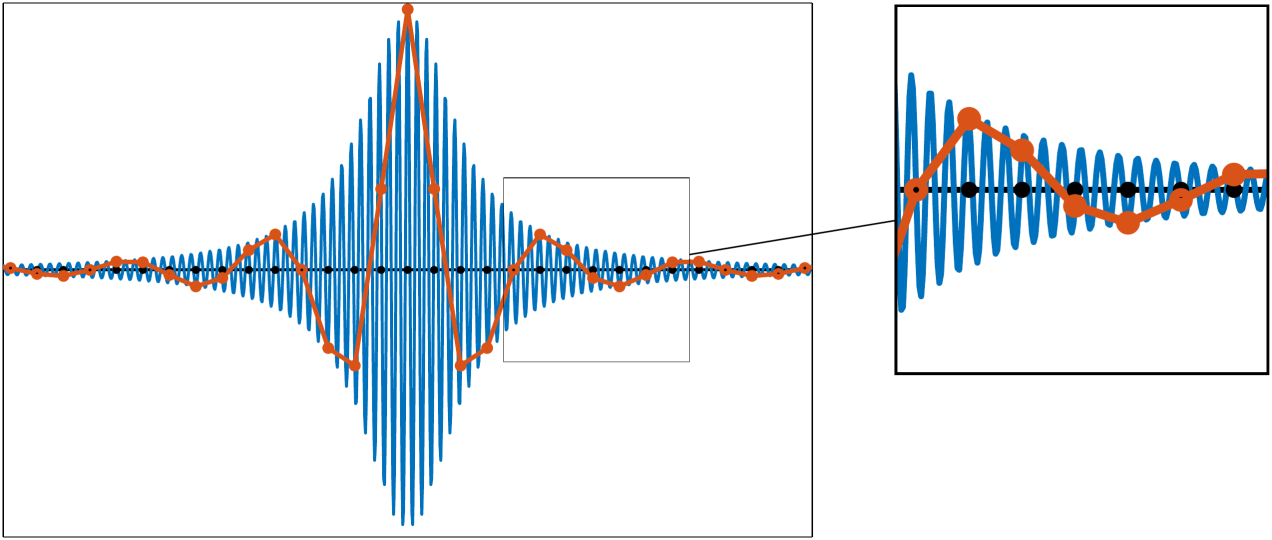Publications
. Splitting methods for nonlinear Dirac equations with Thirring type interaction in the nonrelativistic limit regime. J. Computat. Appl. Math., 387:112494, May 2021. URL https://doi.org/10.1016/j.cam.2019.112494. [preprint]
. Asymptotic preserving trigonometric integrators for the quantum Zakharov system. BIT, 61(1):61–81, March 2021. URL https://doi.org/10.1007/s10543-020-00815-2. [preprint]
. Effective slow dynamics models for a class of dispersive systems. J. Dyn. Diff. Equat., 32(4):1867–1899, December 2020. URL https://doi.org/10.1007/s10884-019-09791-w. [preprint]
. Randomized exponential integrators for modulated nonlinear Schrödinger equations. IMA J. Numer. Anal., 40(4):2143–2162, October 2020. URL https://doi.org/10.1093/imanum/drz050. [preprint]
. Effective numerical simulation of the Klein–Gordon–Zakharov system in the Zakharov limit. In W. Dörfler, M. Hochbruck, D. Hundertmark, W. Reichel, A. Rieder, R. Schnaubelt, and B. Schörkhuber, editors, Mathematics of Wave Phenomena, Trends in Mathematics, pages 37–48, October 2020. Birkhäuser Basel.
. On the comparison of asymptotic expansion techniques for the nonlinear Klein–Gordon equation in the nonrelativistic limit regime. Discrete Contin. Dyn. Syst. Ser. B, 25(8):2841–2865, August 2020. URL https://doi.org/10.3934/dcdsb.2020043. [preprint]
. The KdV approximation for a system with unstable resonances. Math. Methods Appl. Sci., 43(6):3185–3199, April 2020. URL https://doi.org/10.1002/mma.6110. [preprint]
. Trigonometric integrators for quasilinear wave equations. Math. Comp., 88(316):717–749, March 2019. URL https://doi.org/10.1090/mcom/3339. [preprint]
. Uniformly accurate oscillatory integrators for the Klein–Gordon–Zakharov system from low- to high-plasma frequency regimes. SIAM J. Numer. Anal., 57(1):429–457, February 2019. URL https://doi.org/10.1137/18M1177184. [preprint]
. Low regularity exponential-type integrators for semilinear Schrödinger equations. Found. Comput. Math., 18(3):731–755, June 2018. URL https://doi.org/10.1007/s10208-017-9352-1. [preprint]
. Uniformly accurate exponential-type integrators for Klein–Gordon equations with asymptotic convergence to the classical NLS splitting. Math. Comp., 87(311):1227–1254, May 2018. URL https://doi.org/10.1090/mcom/3263. [preprint]
. Asymptotic consistent exponential-type integrators for Klein–Gordon–Schrödinger systems from relativistic to non-relativistic regimes. Electron. Trans. Numer. Anal., 48:63–80, March 2018. URL https://doi.org/10.1553/etna_vol48s63.
. Trigonometric time integrators for the Zakharov system. IMA J. Numer. Anal., 37(4):2042–2066, October 2017. URL https://doi.org/10.1093/imanum/drw059. [preprint]
. An exponential-type integrator for the KdV equation. Numer. Math., 136(4):1117–1137, August 2017. URL https://doi.org/10.1007/s00211-016-0859-1. [preprint]
. Efficient time integration of the Maxwell–Klein–Gordon equation in the non-relativistic limit regime. J. Comput. Appl. Math., 316:247–259, May 2017. URL https://doi.org/10.1016/j.cam.2016.07.007. Selected Papers from NUMDIFF-14. [preprint]
. From the Klein–Gordon–Zakharov system to the Klein–Gordon equation. Math. Methods Appl. Sci., 39(18):5371–5380, December 2016. URL https://doi.org/10.1002/mma.3922. [preprint]
Theses
. Uniformly accurate methods for Klein–Gordon type equations. PhD thesis, Karlsruhe Institute of Technology (KIT), July 2018.
. Numerical integrators for Maxwell–Klein–Gordon and Maxwell–Dirac systems in highly to slowly oscillatory regimes. PhD thesis, Karlsruhe Institute of Technology (KIT), August 2017.


